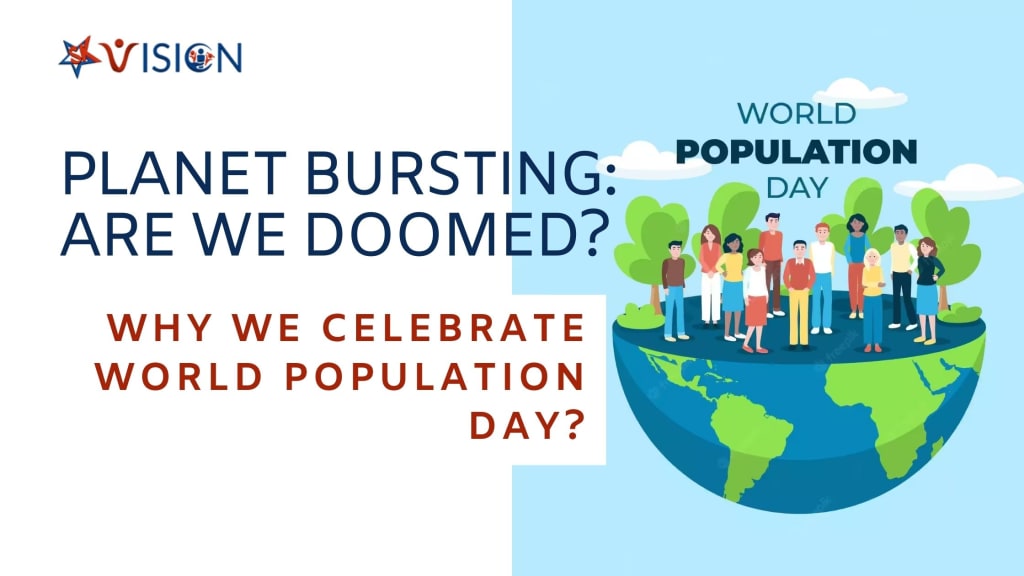Why We Celebrate World Population Day?
Planet BURSTING: Are We DOOMED?

World Population Day, observed every year on July 11th, serves as a reminder of the pressing issues surrounding global population growth.
This annual event was established by the United Nations in 1989, inspired by the “Day of Five Billion,” which was celebrated on July 11, 1987, when the world’s population reached five billion.
The day aims to raise awareness about various population-related challenges and encourages people to take action in addressing these issues.
The Significance of World Population Day
World Population Day focuses on several critical areas:
Population Growth
As of 2024, the global population is estimated to be over 8 billion. This rapid growth presents both opportunities and challenges.
While a larger population can mean a bigger workforce and more innovation, it also puts immense pressure on resources, infrastructure, and the environment.
Sustainable Development
With the global population continuing to rise, sustainable development becomes crucial. World Population Day emphasizes the importance of balancing population growth with environmental sustainability.
This includes promoting renewable energy, reducing waste, and ensuring that natural resources are used efficiently.
Health and Education
One of the key themes of World Population Day is improving access to health services and education, especially for women and young people.
This includes family planning, maternal health, and sexual and reproductive health services. Education, particularly for girls, is seen as a powerful tool in managing population growth and improving quality of life.
Poverty and Inequality
Rapid population growth can exacerbate poverty and inequality. World Population Day highlights the need for policies and programs that address these issues, ensuring that everyone has access to basic needs such as food, clean water, and shelter.
Historical Context
The origins of World Population Day can be traced back to concerns about the impact of rapid population growth on global resources and development.
In the 1960s and 1970s, the world witnessed unprecedented population growth, leading to fears of overpopulation and resource depletion.
The establishment of this day by the United Nations was a response to these concerns, aiming to promote awareness and encourage action.
Themes and Activities
Each year, World Population Day is marked by a specific theme that reflects current global population issues.
Past themes have included “Family Planning is a Human Right,” “Investing in Teenage Girls,” and “Vulnerable Populations in Emergencies.”
These themes guide the activities and campaigns organized by governments, non-governmental organizations (NGOs), and communities worldwide.
Typical activities on World Population Day include:
Educational Programs:
Schools, universities, and community organizations often hold seminars, workshops, and discussions to educate people about population issues and their impact on development and the environment.
Public Campaigns:
Governments and NGOs launch campaigns to raise awareness about specific population-related issues.
These campaigns may involve media outreach, social media campaigns, and public service announcements.
Advocacy and Policy Initiatives:
Advocacy groups use World Population Day to push for policy changes that address population issues. This may involve lobbying for increased funding for family planning services, improved healthcare infrastructure, and policies that promote gender equality.
Health Services
Many organizations offer free or discounted health services on World Population Day, including family planning, reproductive health services, and general health check-ups.
The Role of Family Planning
Family planning is a central theme of World Population Day. Access to family planning services is crucial for managing population growth and improving quality of life.
It allows individuals and couples to decide the number and spacing of their children, which can have profound effects on health, education, and economic stability.
Challenges and the Way Forward
Despite the progress made in raising awareness and addressing population issues, significant challenges remain.
In many parts of the world, access to healthcare and education is limited, poverty rates are high, and gender inequality persists.
Addressing these challenges requires a concerted effort from governments, NGOs, and communities.
Conclusion
World Population Day serves as a vital reminder of the importance of addressing population issues in a sustainable and equitable manner.
It encourages us to reflect on the impact of population growth on our planet and to take action to ensure a better future for all.
By promoting education, health services, and sustainable development, we can work towards a world where everyone has the opportunity to thrive.
About the Creator
Enjoyed the story? Support the Creator.
Subscribe for free to receive all their stories in your feed. You could also pledge your support or give them a one-off tip, letting them know you appreciate their work.






Comments
There are no comments for this story
Be the first to respond and start the conversation.